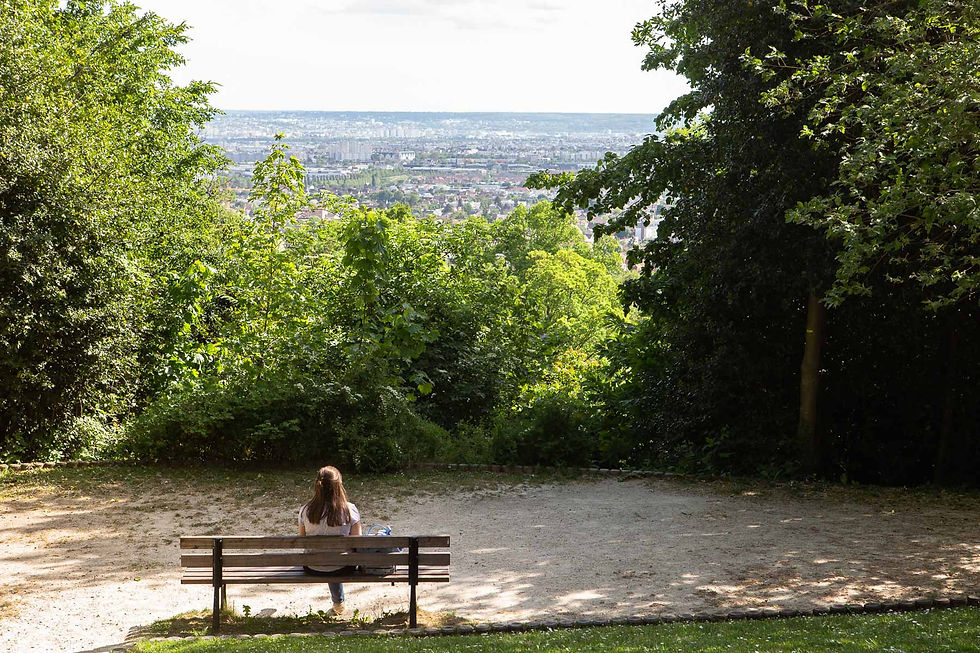Running in Val Parisis: between Seine and forest
- audreyubertino
- Apr 1, 2024
- 3 min read
The Communauté d'agglomération Val Parisis groups together fifteen communes in the Val d'Oise, just a few kilometers from Paris. Val Parisis boasts many tourist attractions, thanks to its landscapes, heritage and geographical location. Its natural spaces also provide a privileged setting for all aficionados of walks and hikes, whether on foot or by bike.

Spanning an area from the banks of the Seine to the Montmorency forest, the Val Parisis Agglomeration Community has set itself the mission of developing and enhancing its territory and its tourism offering. Since its creation in 2016, the Community has already taken several initiatives in this direction, and a number of projects are underway to enhance the area's attractiveness.
Cradle of the Val d'Oise
In recent decades, several archaeological digs have uncovered numerous ancient remains in the Val Parisis communes. A Neolithic necropolis (4750-4400 B.C.) was discovered in Cormeilles-en-Parisis, attesting to the presence of man in the region as early as prehistoric times. Remains from Antiquity and the Middle Ages have also been unearthed and are still visible today. You may come across some of them on your walk, which takes you along the Chaussée Jules César.

The Gallic era was marked by a remarkable people: the Parisii. They lived in what is now the Paris region and took part in the resistance movement against Caesar alongside Vercingetorix in 52 BC. Their name may come from the Gallic kwarisi, and is the origin of the name of the city of Paris and the entire Parisis region.
Architectural and cultural heritage
The communes of the agglomeration boast a varied built heritage, from small castles to Gothic churches. The town with the richest heritage is undoubtedly Eaubonne, once known as "the town of fifteen castles". Don't miss the Château de la Chesnaie or the Petit Château, designed by the famous architect Claude Nicolas Ledoux. The town also stands out for being the only one in the Communauté d'agglomération to boast three churches, each in a different period and style. Don't miss Saint-Martin d'Herblay-sur-Seine, one of the oldest churches in the area, with its magnificent view over the Seine.

In fact, the river's banks have been a source of inspiration for Impressionist artists such as Pissaro, Cézanne and Marquet since the 19th century. Your walk will take you along the Impressionist Trail in La Frette-sur-Seine, where you'll discover the finest works of the artists who set up their easels in the commune, thanks to explanatory panels and reproductions of 19 master paintings.
The landscapes along the Seine are not the only ones to have attracted artists. Many painters also came to the area to paint the famous mills of Sannois. In the 18th century, three mills stood on Mont Trouillet. Today, only one remains, which you can admire on your bike tour.
Green and blue heritage

While Val Parisis boasts a rich cultural heritage, it's also a green setting, ideal for walkers and hikers. Whether you're on foot or by bike, alone or with friends, you're sure to find what you're looking for among the region's natural areas, parks and forests. Your stroll along the Seine will take you to the gateway to the Buttes du Parisis, through the Parc Schlumberger, which offers splendid views over the Paris conurbation.
For the more sporty, cycle paths have been or are being built along the Seine, as part of the Seine à vélo project, a cycle route linking Paris to Le Havre and Deauville, following the meandering river.
Val Parisis is also a land of vineyards and mineral waters. For centuries, vineyards were planted in certain communes, such as Sannois and Ermont. Today, this viticulture has practically disappeared, but it is still present in the names of certain localities (Vignolles, Bonnes Vignes...) or in the coats of arms of certain communes. Some towns have even replanted small vineyards to maintain this winegrowing tradition. As for mineral water, it comes from the many springs that criss-cross the region. Several bottling plants existed in the 19th and 20th centuries.
Find all the routes of the Val Parisis Agglomeration Community and over 1,300 others in the JOOKS application.
Run, walk or ride with JOOKS, from the Moulin de Sannois to the Château de la Chesnaie!



Comments